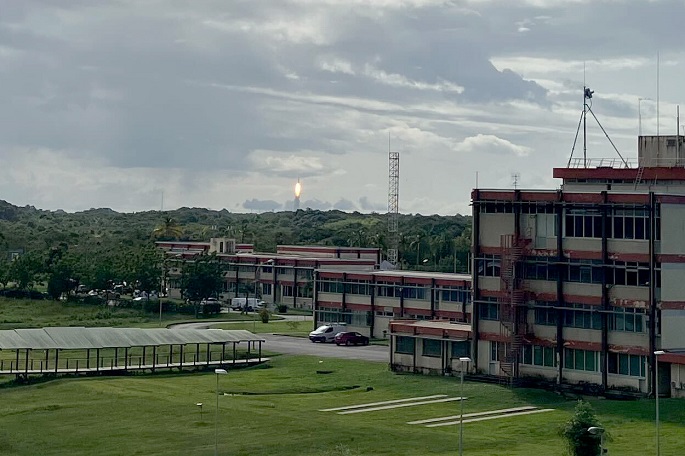'Successful' launch for Europe's new Ariane 6 rocket
Published : 11 Jul 2024, 01:50
Europe's Ariane 6 rocket, co-funded by Germany, blasted off on its inaugural flight into space on Tuesday, lifting off from the European spaceport in Kourou in French Guiana.
The European Space Agency (ESA) described the operation as a success, as Europe seeks to recover from a crisis in its launch sector, although one part of the flight did not go as planned.
"Ariane 6 demonstrated a successful liftoff, launch to orbit and deployment of satellites," ESA wrote on X.
"We have now entered into a new era of spaceflight for Europe, powering us into space and allowing us to realize our ambitions on the world stage," the agency wrote.
The flight experienced one hitch towards the end of the mission, when the upper stage was supposed to burn up on the way back to Earth.
An auxiliary drive in the upper stage initially ignited, but then stopped for unknown reasons, the head of the rocket manufacturer ArianeGroup, Martin Sion, said in a press conference. This meant that two re-entry capsules on board were not released. The upper stage will now remain in space, with the two capsules on board.
"But all of the rest of the mission was according to plan," Sion said.
Tuesday's planned launch comes four years later than initially scheduled, and development of the rocket began a full decade ago.
Ariane 6 is the successor to Ariane 5, which was in operation from 1996 until the summer of 2023. It is designed to launch satellites into space for commercial and public clients and is significantly cheaper than its predecessor.
Ariane 6 is scheduled for its first commercial launch before the end of the year.
The launch would "make an impact on European history," Josef Aschbacher, the ESA's director general, said in a post on X ahead of the launch.
The 56-metre high and 540-ton rocket was carrying The Exploration Company's Nyx Bikini space capsule, OOV-Cube satellites from RapidCubes and Curium One from Planetary Transportation Systems into space.
The Ariane 6 is a multi-national European project. The upper stage of the rocket was built at the ArianeGroup's Bremen plant, and the main stage in the French town of Les Mureaux to the north-west of Paris.
ESA has praised the Ariane 6 design as modular and flexible. Depending on the mission, it can be equipped with two or four boosters and accommodate different payloads in a smaller or longer upper section.
Not everyone is convinced that the rocket is competitive with other recently developed launch craft
Space expert Martin Tajmar from the Dresden University of Technology in Germany said that, despite the innovations compared to its predecessor, Ariane 6 is by no means up to date.
Back in 2015, the US private space company SpaceX ushered in the age of reusable space travel with the company's Falcon 9 rocket. ESA's Tolker-Nielson said the next rocket to replace Ariane 6 will be reusable, although the agency is planning to use the new launcher until at least the mid-2030s.
However, Tajmar also emphasizes that the main aim is not to keep up commercially with the competition. He sees the central task of Ariane 6 first and foremost as giving Europe its own access to space again and securing its independence.
The last Ariane 5 took off into space for the last time almost exactly one year ago. Since then, the 22 European countries that are members of ESA have had no means of their own to launch larger satellites into space.
In some cases, ESA has switched to SpaceX's Falcon 9 rockets.
There are also currently no European launchers for smaller satellites either. The first commercial launch of ESA's Vega C rocket failed in December 2022 and it has been grounded since. It is due to take off again for the first time in November.
France and Germany are among the biggest financial backers of the Ariane 6 project, while additional funding was also provided by the other 20 countries that are members of the ESA.


